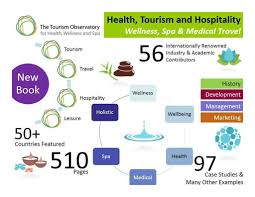
Empowering Communities: The Transformative Impact of Humanitarian Aid
The Importance of Aid in Building Stronger Communities
In a world where challenges and crises are prevalent, aid plays a crucial role in supporting communities and individuals in need. Whether it’s in the form of humanitarian assistance during natural disasters, development aid for long-term sustainability, or medical aid for healthcare access, the impact of aid is far-reaching and significant.
One of the key benefits of aid is its ability to provide immediate relief to those affected by emergencies such as earthquakes, floods, or conflicts. Organizations and governments mobilize resources quickly to deliver food, shelter, medical supplies, and other essentials to impacted areas, helping save lives and alleviate suffering.
Besides emergency relief, aid also plays a vital role in promoting sustainable development. By investing in infrastructure projects, education programs, healthcare services, and economic opportunities, aid helps communities build resilience and capacity for long-term growth. This not only improves living standards but also empowers individuals to lead healthier and more prosperous lives.
Medical aid is another critical aspect of humanitarian assistance. Access to quality healthcare is essential for maintaining well-being and addressing health challenges. Aid organizations work to ensure that medical services reach underserved populations, providing treatments, vaccinations, and health education that can prevent diseases and improve overall health outcomes.
Furthermore, aid fosters collaboration among nations and strengthens global solidarity. Through partnerships and cooperation, countries can pool resources and expertise to address common challenges such as poverty, inequality, climate change, and pandemics. Aid initiatives promote unity and understanding across borders while working towards shared goals of peace and prosperity.
As we navigate an increasingly interconnected world with complex issues affecting vulnerable populations worldwide, the role of aid remains indispensable. By supporting aid efforts through donations, volunteering, or advocacy, individuals can contribute to building stronger communities and creating a more equitable society for all.
Five Key Benefits of Aid: From Immediate Relief to Long-Term Empowerment
- Provides immediate relief during emergencies such as natural disasters and conflicts.
- Promotes sustainable development by investing in infrastructure, education, healthcare, and economic opportunities.
- Improves access to quality healthcare through medical aid initiatives for underserved populations.
- Strengthens global solidarity and fosters collaboration among nations to address common challenges.
- Empowers individuals and communities to build resilience, capacity, and a better quality of life.
7 Challenges of Aid: From Dependency to Cultural Insensitivity
- Dependency
- Corruption
- Market Distortion
- Conditionality
- Undermining Local Institutions
- Debt Burden
- Cultural Insensitivity
Provides immediate relief during emergencies such as natural disasters and conflicts.
A significant pro of aid is its ability to provide immediate relief during emergencies like natural disasters and conflicts. When communities are devastated by sudden calamities, aid organizations swiftly mobilize resources to deliver essential supplies such as food, water, shelter, and medical assistance. This rapid response not only saves lives but also helps alleviate the immediate suffering of those affected, offering a glimmer of hope and support in the midst of chaos and uncertainty. The timely provision of aid during emergencies is crucial in ensuring the survival and well-being of individuals and communities in their most vulnerable moments.
Promotes sustainable development by investing in infrastructure, education, healthcare, and economic opportunities.
Aid plays a crucial role in promoting sustainable development by strategically investing in key areas such as infrastructure, education, healthcare, and economic opportunities. By channeling resources into building essential infrastructure like roads, bridges, and utilities, aid helps create the foundation for long-term growth and prosperity in communities. Additionally, support for education programs enhances human capital and empowers individuals with knowledge and skills to contribute meaningfully to society. Healthcare investments ensure access to quality medical services, improving overall well-being and productivity. Furthermore, aid that fosters economic opportunities through job creation and entrepreneurship initiatives not only boosts local economies but also cultivates self-reliance and resilience within communities for a sustainable future.
Improves access to quality healthcare through medical aid initiatives for underserved populations.
One significant benefit of aid is its ability to enhance access to quality healthcare for underserved populations through targeted medical aid initiatives. By providing essential medical supplies, treatments, vaccinations, and health education to communities in need, aid organizations help bridge the gap in healthcare services. These initiatives not only address immediate health concerns but also contribute to long-term improvements in overall well-being and disease prevention. Through medical aid efforts, vulnerable populations gain access to life-saving treatments and resources that can significantly impact their health outcomes and quality of life.
Strengthens global solidarity and fosters collaboration among nations to address common challenges.
One significant benefit of aid is its ability to strengthen global solidarity and promote collaboration among nations in addressing shared challenges. By working together on aid initiatives, countries can pool resources, expertise, and best practices to tackle issues such as poverty, inequality, climate change, and health crises. This collaborative approach not only fosters mutual understanding and empathy but also paves the way for building a more interconnected and supportive global community where nations come together to create positive change for the benefit of all.
Empowers individuals and communities to build resilience, capacity, and a better quality of life.
Aid plays a crucial role in empowering individuals and communities by enabling them to build resilience, enhance their capacity, and ultimately achieve a better quality of life. Through targeted support and resources, aid programs help communities develop the skills, infrastructure, and systems needed to overcome challenges and thrive in the face of adversity. By fostering self-reliance and providing opportunities for growth and development, aid empowers individuals to create sustainable solutions that lead to long-term improvements in their well-being and overall quality of life.
Dependency
One significant drawback of aid is the potential for creating a cycle of dependency in recipient countries, which can impede their long-term self-sufficiency. When aid is consistently provided without a focus on building local capacity and sustainable solutions, it can lead to a reliance on external assistance rather than fostering independence and resilience within the community. This dependency may weaken initiatives for self-driven development and hinder the recipient country’s ability to address underlying structural issues that perpetuate poverty and inequality. In order to mitigate this con of aid, it is crucial for aid programs to prioritize empowerment, capacity-building, and local ownership to support sustainable growth and development in recipient nations.
Corruption
Corruption poses a significant conundrum in the realm of aid, as funds allocated for humanitarian assistance or development projects can fall prey to mismanagement or diversion by corrupt officials. This malpractice not only hampers the effectiveness of aid but also erodes trust in the system meant to uplift communities in need. When aid funds are siphoned off for personal gain instead of reaching those who require assistance, the intended impact is severely compromised, perpetuating cycles of poverty and inequality rather than fostering sustainable progress. Vigilance and accountability mechanisms are crucial in combating corruption within aid systems to ensure that resources are utilized effectively and transparently for the betterment of society.
Market Distortion
Excessive aid can inadvertently lead to market distortion by disrupting local economies and discouraging domestic production and entrepreneurship. When foreign aid floods a particular sector with free or heavily subsidized goods and services, it can undermine the competitiveness of local businesses and deter individuals from starting their own ventures. This dependency on external assistance can create a cycle of reliance that hampers the development of sustainable industries and stifles innovation within the community. As a result, instead of fostering self-sufficiency and economic growth, excessive aid can perpetuate a state of dependency that hinders long-term prosperity and resilience.
Conditionality
Conditionality in aid can present a significant challenge as some forms of assistance are tied to specific requirements or agendas that may not necessarily align with the priorities or needs of recipient communities. This can lead to a lack of autonomy and control over their own development path, potentially undermining the effectiveness and sustainability of aid projects. When aid comes with strings attached, it can limit the flexibility and adaptability needed to address local challenges in a way that is most beneficial for the community. This con highlights the importance of ensuring that aid is responsive to the unique circumstances and aspirations of those it aims to support, fostering genuine empowerment and self-determination in the process.
Undermining Local Institutions
One significant con of aid is its potential to undermine local institutions by bypassing or weakening existing governance structures. When aid efforts prioritize external intervention over collaboration with local authorities and organizations, it can disrupt the established systems of governance and decision-making. This disruption may lead to a lack of accountability, dependency on foreign aid, and a loss of autonomy for local communities in determining their own development priorities. Ultimately, undermining local institutions through aid can hinder sustainable progress and impede the long-term self-reliance of communities.
Debt Burden
One significant con of aid is the potential for creating a debt burden, particularly when loans are disguised as aid to developing countries. While these financial resources may provide immediate relief or support, they can ultimately lead to unsustainable debt levels that hinder a country’s long-term economic growth and stability. As countries struggle to repay these loans, they may be forced to divert resources away from essential services such as healthcare and education, perpetuating a cycle of dependency and financial vulnerability. The resulting debt burden can limit a nation’s ability to invest in its own development and achieve sustainable progress, highlighting the complex challenges associated with certain forms of aid.
Cultural Insensitivity
A significant con of aid programs is the potential for cultural insensitivity, where well-intentioned initiatives may inadvertently disregard or misunderstand the cultural nuances of the communities they aim to assist. This can lead to the imposition of solutions that do not align with the local customs, beliefs, or practices, ultimately undermining the effectiveness and sustainability of aid efforts. Without considering cultural sensitivities, aid programs risk alienating community members and creating barriers to acceptance and participation, highlighting the importance of incorporating cultural awareness and consultation in the design and implementation of aid interventions.


